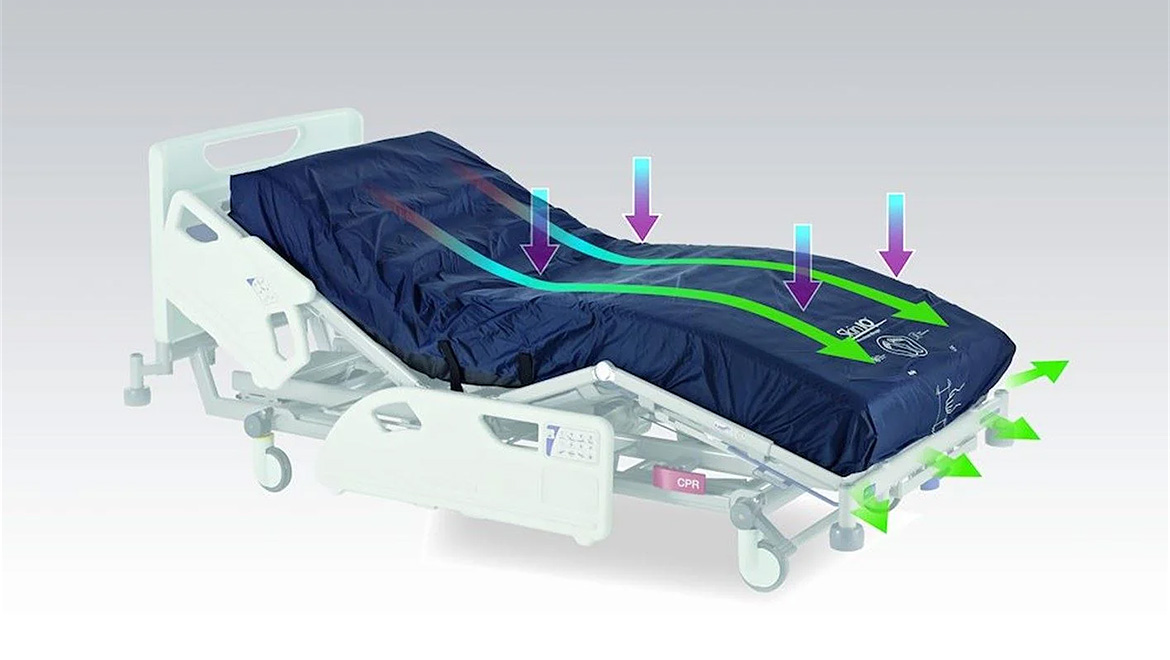The time factor in Alternating Pressure
Why “Lower for Longer” is the driving principle behind the performance of an Alternating Pressure surface.
The aim of Alternating Pressure (AP) support surface technologies is to periodically remove pressure beneath the body by inflating and deflating a series of air cells.
This helps to balance the application and removal of pressure to support tissue recovery and to allow tissue reperfusion to occur1. It also mimics a healthy body’s natural protective environment of regular, spontaneous movement.
It is important that active surfaces provide pressure redistribution for long enough periods in order to make a clinical difference. The most effective surfaces are likely to be those able to hold pressure away from the body for as long as possible2.
That is why when assessing the performance of an active alternating surface, the aim is to achieve lower pressures, for longer times.
Although designed to be adaptable between active and reactive therapy, AtmosAir Velaris aims to meet or exceed the performance of a dedicated active support surface, in order to offer the efficiency of a One Surface Strategy without compromising on therapy.
In independent third party tests, AtmosAir Velaris demonstrated full pressure offloading at the sacral and heel areas for significantly longer times than the other tested surfaces3.
_cropped_Blog%20Image_PNG.png)
When used as an active alternating surface, the Velaris uses AltoVac vacuum technology to compress and inflate its air cells in an alternating 1-in-2 cell cycle. Two layers of foam are built into each air cell, providing comfort without the need for an additional layer of foam between the patient and the air cells. When the cells are compressed, the foam is compressed, enabling full pressure offloading even from the vulnerable heel and sacrum.
Supporting a One Surface Strategy to streamline protocols, and delivering full pressure offloading for prolonged periods of time, the AtmosAir Velaris system provides a cost-effective solution that helps to support best practice in PI prevention.
Find out more about the AtmosAir Velaris here, or contact your local Arjo representative to book a demonstration or trial.
References
- Y-K Jan, Brienza DM, Boninger ML & Brenes (2011). Comparison of skin perfusion response with alternating and constant pressures in people with spinal cord injury. Spinal Cord (2011) 49, 136-141
- Mawson A.R. et al. Risk factors for early occurring pressure ulcers following spinal cord injury. American Journal of Physical Medical Rehabilitation. 1988: 123-127
- Clark M (2021), Comparative Testing of Interface Pressure Performance of Seven Hybrid Surface Technologies Using a Weighted Mannequin (Arjo whitepaper).



_Blog%20Image_PNG.png)

